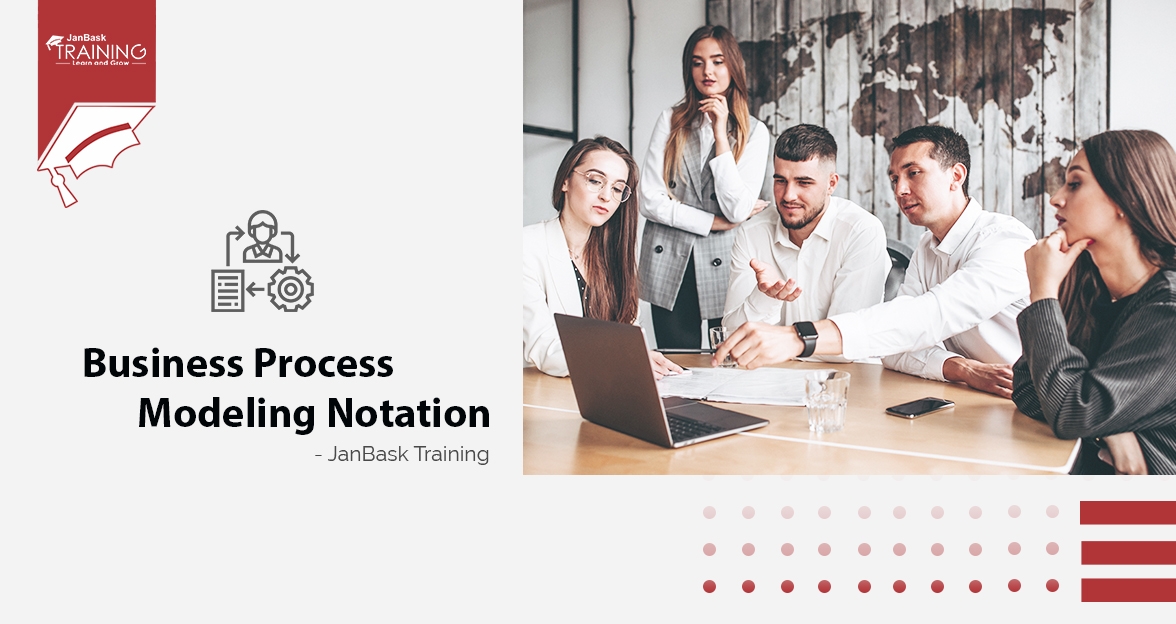Introduction
The roles of a scrum master and a project manager may seem similar but they have several differences. That is why several professionals discuss the intricacies of scrum master vs. project manager. This enables them to understand how both roles are distinct and separate from each other. For the unversed, the key differences lie in the leadership roles and the way they interact with their respective team members and manage them accordingly.
In this guide, we will try to highlight these differences between a scrum master and project manager and other relevant details. This will enable you to choose which profession among them suits your requirements the most.
Business Analyst Training & Certification
- No cost for a Demo Class
- Industry Expert as your Trainer
- Available as per your schedule
- Customer Support Available
What is a Scrum Master?
A scrum master is a professional who helps establish scrum and assists everyone in understanding its theory and practice. Their responsibilities are usually restricted to a scrum team and the organization serving them. In other words, the scrum master facilitates scrum to the larger team by ensuring they follow the scrum framework. The professional is always committed to the scrum methodology, agile principles, and best practices. However, they also remain flexible and open to opportunities for the team to improve their workflow over time.
The responsibilities of a scrum master include:
- Standups: Ensure daily stand ups or the daily scrum as needed.
- Iteration/sprint Planning Meetings: Protect the team from over-committing and scope creep. Help with estimation and sub-task creation.
- Sprint Reviews: Participate in the meeting to gather feedback.
- Retrospectives: Note different areas for improvement and action items for all the future sprints.
- Board Administration: Work as the administrator of a particular scrum board. Ensure that all cards are up to date and the scrum tools are working well.
- 1 on 1s: Meet team members and stakeholders individually as needed. Analyze team disagreements about processes and working styles. Such individual interactions are often crucial for team development.
- Internal Consulting: Consult with team members and internal stakeholders on how to work with the scrum team.
- Reporting: Regular analysis of burndown charts and portfolio planning tools to understand what actually gets built.
- Blockers: Help the team eliminate external blockers and manage internal roadblocks through process or workflow improvements.
What is a Project Manager?
A project manager is a professional who plans, organizes, and executes projects. These professionals often work within certain restraints like budgets and schedules. Project managers are also responsible for leading teams and managing them, defining goals, and communicating with stakeholders. This also involves seeing a project through to its closure.
The project manager helps drive the success of the project by fulfilling the following responsibilities:
- Defining the scope of the project
- Staying on schedule
- Planning a project’s cost and sticking to a particular budget
- Managing project resources, teams, and workers
- Documenting the progress of the respective project
- Communicating with various stakeholders
- Assessing risks
- Troubleshooting
- Leading quality assurance
Scrum Master vs. Project Manager: Key Differences
A scrum master ensures the team follows all the scrum principles thoroughly and properly. A project manager, on the other hand, manages the entire project, including the risks and budget associated with it. However, you must know all the key differences between the two roles to get an in-depth insight. That is why we have curated the comparison table below that highlights the scrum master vs. project manager debate in a better way.
|
Category
|
Scrum Master
|
Project Manager
|
|
Role Focus
|
Facilitates the Scrum process to ensure adherence to Scrum principles and practices.
|
Oversees the entire project and focuses on scope, schedule, cost, and risk management.
|
|
Primary Responsibilities
|
- Facilitates daily stand-ups, sprint planning, and retrospectives.
- Removes obstacles that hinder the team's progress.
- Coaches the team in self-organization and cross-functionality.
- Ensures the team adheres to Scrum values and practices.
|
- Develops project plans, timelines, and budgets.
- Manages project risks and resources.
- Communicates project progress to stakeholders.
- Ensures project deliverables meet specified requirements.
|
|
Scope of Authority
|
No direct authority over the team; acts as a servant leader.
|
Has authority over the project team, making key decisions to ensure project success.
|
|
Focus on Delivery
|
Focuses on maximizing team productivity and facilitating continuous improvement.
|
Focuses on delivering the project on time, within scope, and on budget.
|
|
Risk Management
|
Helps the team identify and mitigate risks within the sprint cycle.
|
Identifies, analyzes, and manages project risks across all phases of the project.
|
|
Team Leadership Style
|
Acts as a coach and facilitator, promoting a collaborative environment.
|
Acts as a leader and decision-maker, guiding the team towards project goals.
|
|
Stakeholder Management
|
Primarily interacts with the Scrum team and Product Owner; limited direct engagement with external stakeholders.
|
Regularly communicates with stakeholders, including clients, sponsors, and higher management.
|
|
Success Metrics
|
Success is measured by the team's ability to follow Scrum practices and deliver increments of product functionality.
|
Success is measured by the completion of the project within the agreed-upon constraints of time, cost, and scope.
|
|
Project Scope
|
Works within the scope defined by the Product Owner; focuses on iterative delivery.
|
Manages the overall project scope, ensuring all project deliverables are met.
|
|
Documentation
|
Minimal documentation; focuses on maintaining Scrum artifacts like the Product Backlog and Sprint Backlog.
|
Extensive documentation; responsible for creating and maintaining project plans, status reports, and other project documentation.
|
|
Time Management
|
Ensures timeboxes (e.g., sprints, daily stand-ups) are adhered to.
|
Manages the overall project timeline, including milestone tracking and deadline adherence.
|
|
Training and Development
|
Coaches the team in Scrum practices and agile methodologies.
|
Provides training and resources as needed, but focuses more on overall project management skills rather than specific frameworks.
|
|
Project Methodology
|
Works exclusively within agile frameworks, primarily Scrum.
|
Can work within various project management methodologies, including agile, waterfall, or hybrid approaches.
|
Methodology Breakdown: Agile vs Traditional Project Management
Project management refers to the process of planning, communicating, organizing, adjusting, and managing different resources. It also involves identifying and balancing the scope of a particular project, its time, cost, quality, and resources.
Agile and traditional project management are two primary approaches to project management. To proceed further in this field, you must understand the major differences between the two approaches.
Agile Project Management
Agile project management often delves into evolving changes and collaborative effort. This enables project managers to bring out the ultimate results rather than a predefined process. Adaptive planning happens to be the top feature of Agile which also makes it a favorite among all project managers worldwide.
Traditional Project Management
The traditional project management follows a linear approach where all the phases of a particular process occur in sequence. Its concept often depends on various predictable tools and experience. Every project in the traditional approach follows the same life cycle which includes the stages like designing, building, testing, feasibility, planning, production, and support.
Now, let us understand the major differences between agile and traditional project management through the comparison table below:
Below is a detailed comparison table that highlights the key differences between Agile and Traditional Project Management.
Category
|
Agile Project Management
|
Traditional Project Management
|
|
Approach
|
Iterative and incremental; focuses on continuous delivery and adaptability.
|
Linear and sequential; follows a predefined plan and structure.
|
|
Project Phases
|
Phases are flexible and can overlap, with frequent reassessments and adaptations.
|
Follows a fixed sequence of phases such as initiation, planning, execution, monitoring, and closure.
|
|
Planning
|
Adaptive planning with continuous feedback; plans are refined as the project evolves.
|
Comprehensive upfront planning with detailed project plans that are followed strictly.
|
|
Flexibility
|
Highly flexible; changes are embraced and integrated as new information arises.
|
Less flexible; changes are typically managed through formal change control processes.
|
|
Focus
|
Emphasis on customer collaboration and delivering working products frequently.
|
Emphasis on meeting the project plan, budget, and scope as defined at the outset.
|
|
Scope Management
|
Scope is flexible and can evolve based on changing requirements and stakeholder feedback.
|
Scope is defined at the beginning and changes are generally discouraged unless formally approved.
|
|
Risk Management
|
Risks are managed continuously, with the ability to pivot based on new risks or issues.
|
Risks are identified and managed primarily during the planning phase, with a focus on minimizing deviations from the plan.
|
|
Customer Involvement
|
High level of customer involvement throughout the project; feedback is integral to the process.
|
Customer involvement is typically concentrated at the beginning (requirements gathering) and end (acceptance testing) of the project.
|
|
Team Structure
|
Cross-functional teams that are self-organizing; roles are more fluid and collaborative.
|
Defined roles with a hierarchical structure; teams are typically organized by function.
|
|
Deliverables
|
Frequent, smaller deliverables delivered in iterations (e.g., sprints).
|
A single final deliverable delivered at the end of the project.
|
|
Project Control
|
Controlled by the team with a focus on collaboration and adaptability; less emphasis on formal documentation.
|
Controlled by the project manager with a focus on adherence to the plan; extensive documentation is maintained.
|
|
Documentation
|
Minimal documentation; focuses on working software and interactions over comprehensive documentation.
|
Extensive documentation; every phase and deliverable is documented in detail to ensure traceability.
|
|
Change Management
|
Changes are expected and easily incorporated into the process; the project adapts to new requirements.
|
Changes are managed through formal change control processes, often requiring approvals and adjustments to the project plan.
|
|
Time Management
|
Time-boxed iterations (e.g., sprints) are used, with a focus on delivering value within each iteration.
|
Follows a strict project timeline with milestones that must be met as per the initial plan.
|
|
Quality Assurance
|
Continuous testing and feedback throughout the project; quality is built into the process.
|
Testing is typically done after the build phase; quality assurance is a separate phase in the project lifecycle.
|
|
Cost Management
|
Costs are managed iteratively, with budgets often re-evaluated as the project progresses.
|
Costs are estimated and controlled according to the initial plan, with less flexibility for changes.
|
|
Final Product
|
A product that evolves with continuous improvements and adjustments based on feedback.
|
A product delivered according to the initial specifications with little room for modifications post-delivery.
|
|
Best Suited For
|
Projects where requirements are likely to change or are not fully understood from the start.
|
Projects with clear, well-defined requirements and a predictable environment.
|
|
Examples of Methodologies
|
Scrum, Kanban, Lean, Extreme Programming (XP).
|
Waterfall, PRINCE2, Critical Path Method (CPM).
|
When to Choose a Scrum Master or Project Manager?
Deciding between a scrum master vs. project manager career ultimately depends on your career goals, interests, and skills. Consider the following factors to make an informed decision as a professional:
- Leadership vs. Facilitation - Project management may be a better fit for you if you enjoy taking charge, leading teams, and overseeing projects from start to end. On the other hand, the scrum master role might be more appealing if you prefer coaching teams, facilitating collaboration, and guiding them towards self-organization.
- Methodology Preference - Consider your preference for various project management methodologies before choosing either profession. If you enjoy following predefined processes and working within a structured framework, project management may suit you. If you wish to work with agile methodologies, iterative development, and other adaptive planning strategies, the scrum master role aligns with your interests.
- Career Path- Consider your long-term career goals and the opportunities available in each field when you make your decision. Project management offers you broader career paths, which include program management, portfolio management, or other executive roles. The scrum master role, on the other hand, can lead to agile project management, agile coaching, or even product ownership across organizations.
Real-World Examples: Scrum Masters and Project Managers in Action
Now that we understand the roles and responsibilities of both scrum masters and project managers, let us look at some real-world examples, too.
Mayden’s Transformation from Waterfall to Scrum: A Scrum Master Case Study
The case study below illustrates the importance of embracing agile methodologies through the example of Mayden, a small and innovative company in the U.K. that develops managed web applications for the healthcare sector.
Problem
Mayden was struggling with their traditional waterfall approach to software development. The company faced significant challenges in delivering projects on time, meeting customer expectations, and responding effectively to changing requirements. These issues were beginning to impact their ability to innovate and satisfy their clients' needs.
How It Was Solved
Recognizing the need for a new approach, Mayden decided to transition from the Waterfall methodology to the Agile framework, specifically adopting Scrum. The following steps were key to their successful transformation:
-
Agile Training - A crucial first step was educating the team on Agile principles. Rob Cullingford, a member of the development team, attended a Certified ScrumMaster (CSM) course and became a strong advocate for Agile within the company. To ensure everyone was on the same page, Mayden brought in Agilify and Paul Goddard to provide comprehensive CSM training to the entire team. This training fostered a shared understanding of Scrum principles and practices, laying the groundwork for a successful transition.
-
Management Support- The management team at Mayden quickly recognized the potential of Scrum to transform their project delivery process. Their support and commitment were instrumental in driving the adoption of Scrum throughout the organization. By championing this change, management ensured that the entire company was aligned with the new Agile approach.
-
Enthusiastic Embrace - The transition to Scrum was met with enthusiasm across the board. The development team, along with managers and support staff, eagerly embraced the new methodology. The decision to pursue Scrum training was made swiftly, and within a week, 20 team members attended the ScrumMaster training. This collective enthusiasm and rapid adoption were critical to the successful implementation of Scrum at Mayden.
Delivering World Cup Stadiums On-Time: A Project Manager Case Study
The 2022 World Cup, hosted in Qatar, required the construction of seven new stadiums built to FIFA regulation standards, all before the opening match. Meeting this extremely tight deadline demanded expert project management to coordinate the complex construction efforts.
Problem
Building world-class stadiums within such a short time frame presented significant challenges. The project teams needed to manage intricate construction processes, adhere to strict regulatory standards, and navigate various unforeseen obstacles, all while ensuring the stadiums were completed on time.
How It Was Solved
To tackle this monumental task, project teams adopted a hybrid approach, blending both waterfall and agile methodologies. Using software tools like Microsoft Project, they meticulously planned every aspect of the construction, from requirements and costs to task dependencies and risk management. This combination of thorough initial planning and flexible execution allowed them to adapt to setbacks, such as supply chain disruptions, and still keep the project on track.
-
Hybrid Methodologies - The teams utilized both waterfall and agile project management approaches. The waterfall method provided a structured framework for the overall project, while agile methodologies allowed for adaptability and quick responses to challenges as they arose during construction.
-
Strong Initial Planning with Adaptable Execution - Meticulous planning was crucial to the project’s success. Detailed schedules, cost estimates, and risk management strategies were established early on. However, the ability to adapt these plans was equally important. When issues like supply chain disruptions occurred, the teams adjusted their schedules and resources accordingly, ensuring continuous progress.
-
Overcoming Risks and Achieving On-Time Delivery - Despite facing labor issues and other challenges, the project teams managed to overcome these obstacles through coordinated efforts and goal alignment between stakeholders. Their ability to navigate risks and maintain focus on the end goal resulted in the successful completion of the stadiums on time, ready to host the biggest single-sport event in the world.
Career Path Insights: Transitioning Between Roles
Scrum masters possess excellent technical skills in agile methodologies, process optimization, and team facilitation. Transitioning to the role of a project manager requires leveraging the same expertise to incorporate diverse methodologies, larger-scale projects, and lead various multidisciplinary teams.
On the other hand, transitioning from a project manager to a scrum master requires shifting focus from broad project oversight and control to promoting a collaborative, team-centric environment where the emphasis is on coaching, facilitating agile practices, and enabling the team to self-organize and deliver value iteratively.
Business Analyst Training & Certification
- Personalized Free Consultation
- Access to Our Learning Management System
- Access to Our Course Curriculum
- Be a Part of Our Free Demo Class
Conclusion
Choosing between a scrum master and project manager career is a personal decision. It totally depends on your respective interests, strengths, and other career goals. Both career paths offer unique opportunities for your growth, advancement, and ultimately, job satisfaction. Consider your methodology preferences, leadership style, and long-term aspirations when making your decision.
A successful career in both scrum master and project manager’s field requires continuous learning, professional development, and a passion for delivering projects successfully. So, acquire the right certifications and hone your skills accordingly to build a career in either field.
You can pursue these professional courses from JanBask training under expert guidance. So, why wait? Get in touch with our industry experts to get guidance on your career aspects soon
FAQ’s
1. Is a scrum master’s role better than a project manager?
Scrum masters and project managers communicate at every stage of the project effectively. This enables both professionals to reduce the scope of errors. Now, the catch is that both professionals also take each other's feedback, mitigate different risks, and enable great bonding within a team. It means a scrum master and a project manager works at the same level. Neither of the roles have supreme authority over the other.
2. Who gets a higher salary, scrum master or project manager?
Scrum masters usually have higher salaries than project managers. This is because the former works in the IT sector and engineering fields. That is why they earn more than professionals with a PMP certification which is directly related to project management.
3. Can a scrum master also become a project manager?
Yes scrum masters can be project managers, and even project managers can be scrum masters, but this is not the same thing. A scrum master’s role is embedded specifically on a scrum team. On the other hand, a project manager refers to a professional who leads virtually any type of project. This means that while a scrum master can transition into a project manager role, it requires expanding their skill set to include a wider range of project management techniques and responsibilities beyond agile practices. Similarly, a project manager transitioning to a Scrum Master role needs to shift their focus from traditional project oversight to promoting a collaborative, self-organizing team environment within the scrum framework.
4. Is there an excellent demand for scrum masters?
There are several job listings for a scrum master and its related roles all over the world on a regular basis. The acceleration of agile adoption across different organizations has increased the demand for these professionals, and the trend is likely to continue in the near future, too.
Business Analyst Course
Upcoming Batches
Trending Courses
Cyber Security
- Introduction to cybersecurity
- Cryptography and Secure Communication
- Cloud Computing Architectural Framework
- Security Architectures and Models
Upcoming Class
-0 day 05 Jan 2026
QA
- Introduction and Software Testing
- Software Test Life Cycle
- Automation Testing and API Testing
- Selenium framework development using Testing
Upcoming Class
5 days 10 Jan 2026
Salesforce
- Salesforce Configuration Introduction
- Security & Automation Process
- Sales & Service Cloud
- Apex Programming, SOQL & SOSL
Upcoming Class
1 day 06 Jan 2026
Business Analyst
- BA & Stakeholders Overview
- BPMN, Requirement Elicitation
- BA Tools & Design Documents
- Enterprise Analysis, Agile & Scrum
Upcoming Class
4 days 09 Jan 2026
MS SQL Server
- Introduction & Database Query
- Programming, Indexes & System Functions
- SSIS Package Development Procedures
- SSRS Report Design
Upcoming Class
4 days 09 Jan 2026
Data Science
- Data Science Introduction
- Hadoop and Spark Overview
- Python & Intro to R Programming
- Machine Learning
Upcoming Class
11 days 16 Jan 2026
DevOps
- Intro to DevOps
- GIT and Maven
- Jenkins & Ansible
- Docker and Cloud Computing
Upcoming Class
5 days 10 Jan 2026
Hadoop
- Architecture, HDFS & MapReduce
- Unix Shell & Apache Pig Installation
- HIVE Installation & User-Defined Functions
- SQOOP & Hbase Installation
Upcoming Class
5 days 10 Jan 2026
Python
- Features of Python
- Python Editors and IDEs
- Data types and Variables
- Python File Operation
Upcoming Class
4 days 09 Jan 2026
Artificial Intelligence
- Components of AI
- Categories of Machine Learning
- Recurrent Neural Networks
- Recurrent Neural Networks
Upcoming Class
12 days 17 Jan 2026
Machine Learning
- Introduction to Machine Learning & Python
- Machine Learning: Supervised Learning
- Machine Learning: Unsupervised Learning
Upcoming Class
4 days 09 Jan 2026
Tableau
- Introduction to Tableau Desktop
- Data Transformation Methods
- Configuring tableau server
- Integration with R & Hadoop
Upcoming Class
5 days 10 Jan 2026

























